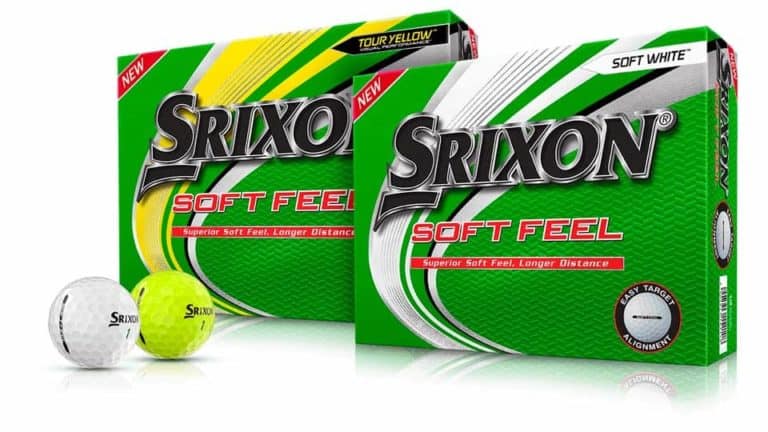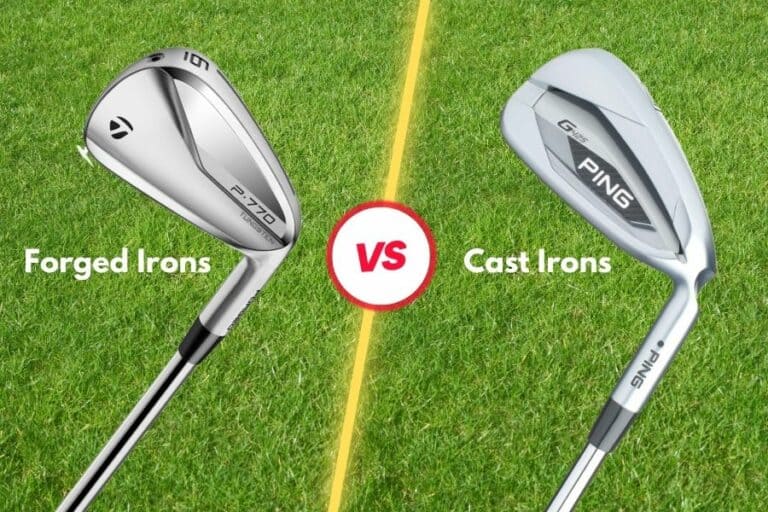How Much Is A Golf Ball?

Curious about the cost of a golf ball? Find out how much is a golf ball and get insights on the best options for your budget.
How much is a Golf ball?
The price of golf balls can vary based on their quality, quantity, and brand. On average, golf balls can be priced anywhere from $2 to $4 each. These balls are typically sold in packs of 12, 24, 36, or 48, and the prices for these bundles will depend on the brand and quality.
Serious golfers often seek out premium golf balls, while recreational and amateur players can opt for decent quality used or refurbished golf balls.
Here is an approximate range of costs for different types of golf balls:
- A pack of distance balls typically cost around $15.
- A pack of premium control balls, you may need to spend upto $50.
- A pack of 4-piece and 5-piece golf balls range between $50 to $80.
- Used or refurbished golf balls are priced around $1.4 to $1.9 per ball.
Types of Golf Balls
Golf balls come in different types, each designed to suit the varying needs of golfers according to their skill level, playing style, and course conditions. Here are the types of balls that you may consider while purchasing:
- Distance Balls: Beginner golfers frequently use these balls because they are made for maximum distance.
- Mid-Range Balls: More seasoned golfers frequently choose these balls because they strike a good balance between distance and control.
- Control Balls: Professional players prefer these balls because of their superior design for control and precision.
- Tour Balls: Professional golfers have special requirements, thus these balls are made to fulfill those needs; amateur and novice golfers should go elsewhere.
Popular golf ball brands and their prices
There are a number of golf ball brands in the market, each with different quality and price range. So, here is a list of popular golf ball brands and their price range.
| Brand | Price Range |
| TaylorMade | $14 to $28 |
| Titleist | $24 to $39 |
| Srixon | $19 to $35 |
| Callaway | $15 to $41 |
| Bridgestone | $15 to $35 |
| Wilson | $10 to $30 |
| Nike Golf | $13 to $33 |
| Nitro | $9 to $33 |
| Pinnacle | $10 to $35 |
| Precept | $15 to $47 |
| Team Golf | $16 to $45 |
| Top Flite | $19 to $25 |
| Vice | $14 to $34 |
Factors Affecting the Price of the Golf Ball
There are several factors that contribute to the price of a golf ball, including:
1. Research
Golf balls require extensive research and development, with manufacturers investing in scientists, engineers, and other experts to experiment with different materials and development methods, resulting in costly innovation for the consumer. Brands like Titleist, Callaway, and Taylormade are just a few golf ball manufacturers lauded for their use of premium components and innovative designs.
2. Materials
Golf ball materials have evolved over hundreds of years and are expensive to source and work with, with materials like surlyn and urethane on the top cover of a golf ball currently irreplaceable, driving costs even further.
As urethane typically delivers strong spin for low handicappers, it is the highest quality (and most expensive) material utilized in tour-grade golf balls. Ionomers and surlyns, on the other hand, are more affordable, more robust, and provide a great trajectory, making them the perfect option for beginners.
3. Layers
Golf balls now have multiple layers, which affect performance and cost, with more layers resulting in a pricier ball. Various golf balls have different layers. For instance, costly golf balls frequently include more than two layers of materials. The ball’s performance and control depend on these layers’ functions.
Ball control, such as stopping and spinning, improves with such a disparity. Unless you’re a low handicapper, a double-layered golf ball is fine.
A golf ball has the following number of layers:
- One-Piece Golf Ball: They are inexpensive and ideal for beginners to use on driving ranges for practice, but their performance is insufficient to use them on a golf course.
- Two-Piece Golf Ball:They are ideal for a weekend, amateur, and casual golfers because they are relatively inexpensive and are noted for offering more distance with less spin.
- Three-Piece Golf Ball: Three-piece golf balls are designed for better-than-average players and can be considered tour-level balls depending on the components utilized. Because of the enhanced performance they provide, these balls are priced slightly higher than the one-piece and two-piece construction balls and are popular with amateurs as well.
- Four-Piece Golf Ball: Four-piece golf balls are designed for golfers with low handicaps and professional tour players. These golf balls have four layers that offer players maximum customization for better performance with any club. They reduce spin for increased accuracy and distance and can provide high or low launch as needed. Overall, four-piece golf balls offer greater individualized performance for golfers.
- Five-piece Golf Ball: They are the costliest golf balls available, as well as the ones that improve performance the most. These golf balls are known to offer a faster speed overall, more spin, and a softer feel around the greens.
4. Color
Golf balls also come in a variety of colors. Since they are easy to follow and locate on the golf course, this feature makes them slightly over priced than regular white golf balls.
In our experience, orange balls perform admirably in bright, cloudless daytime conditions, yellow balls perform admirably in dimly lit environments, and green balls perform well in cloudy environments.
5. Dimples
Most modern golf balls contain 300–400 dimples. Dimples on the golf balls reduce drag and lift while increasing distance. Today’s golf balls need dimples to perform aerodynamically.
Beyond numbers, dimples can be spherical or hexagonal and placed in diverse ways. Bridgestone uses aggressive “dimple-in-dimple” designs.
The average golfer can’t forecast the eventual consequence of a given dimple arrangement. So, your best chance is to check the manufacturer’s dimple information and make sure it doesn’t contradict with your game’s needs.
6. Branding
Branding and marketing contribute significantly to the total cost of golf balls, with established brands charging more due to the cost of convincing consumers to relate their brand with quality.
7. Packaging and Shipping
Packaging and shipping contribute to the overall cost of golf balls. Manufacturers incur expenses for packaging materials and preparing the balls for shipment. Shipping costs depend on distance, shipping method, and handling requirements. These costs are factored into the retail price, along with manufacturing and marketing expenses, to determine the final cost to the customer.
8. The Growing Demand
The law of supply and demand dictates that as more people take up golf, the demand for golf balls increases, and manufacturers need to keep up with the growing demand, leading to price increases. Moreover, golf balls are indispensable, and players must purchase them to play the game, which manufacturers exploit by setting a minimum price threshold to avoid unfair competition.
Tips to save money on Golf Balls
Golf can be an expensive sport, but with these tips to save money on golf balls, you can still enjoy playing without breaking the bank.
1. Buy in bulk
Purchasing golf balls in larger quantities often results in lower per-ball prices. Look for deals on bulk packages or multi-ball packs.
2. Consider used golf balls
Used golf balls can be significantly cheaper than brand new ones and still offer good performance. Look for reputable sellers or websites that specialize in selling used golf balls. Many of these balls are in excellent condition and can save you a significant amount of money.
3. Look for discounts and sales
Keep an eye out for discounts and sales at golf retailers, both online and offline. These can include clearance sales, seasonal promotions, or special events. Subscribing to newsletters or following golf retailers on social media can help you stay informed about these deals.
4. Try lower-priced golf ball models
Premium golf balls tend to be more expensive due to their advanced technology and performance features. However, there are often lower-priced alternatives from the same brands that offer good performance at a more affordable price. Experiment with different brands and models to find one that suits your game without breaking the bank.
5. Limit the number of lost balls
One of the most significant expenses in golf is losing balls. Try to minimize this by playing more strategically and taking precautions. For example, avoid risky shots over water hazards or dense rough, and invest in a ball retriever to retrieve balls from hazards when possible.
6. Take care of your golf balls
Proper maintenance and care can extend the lifespan of your golf balls. Clean them after each round using warm soapy water and a soft cloth or brush. Avoid hitting trees, cart paths, or other hard surfaces that can damage the ball’s cover. With proper care, you can make your golf balls last longer, reducing the frequency of replacements.
Conclusion
In conclusion, the cost of a golf ball can vary significantly depending on the brand, quality, and technology used. While some golf balls may be expensive, they often offer better performance and durability. Ultimately, golfers should consider their budget and personal preferences when choosing a golf ball.








